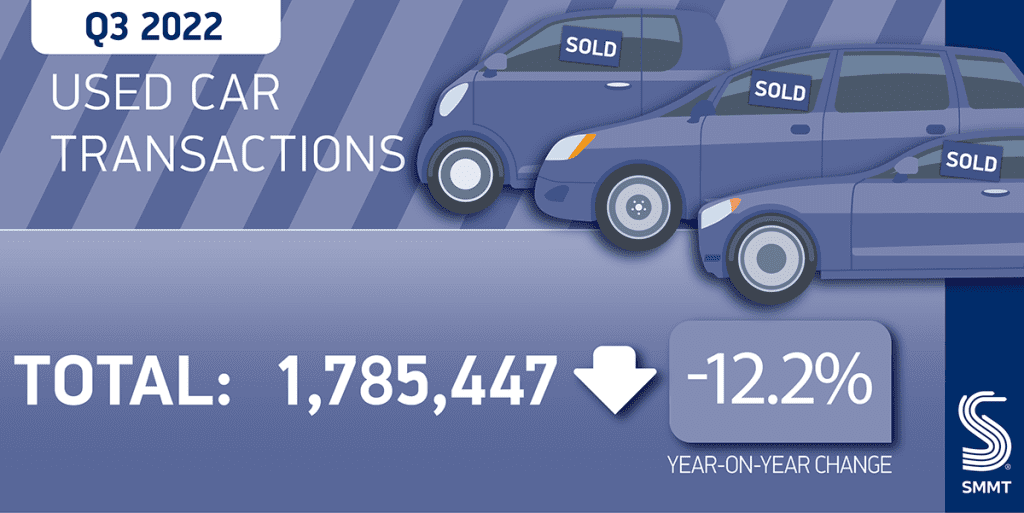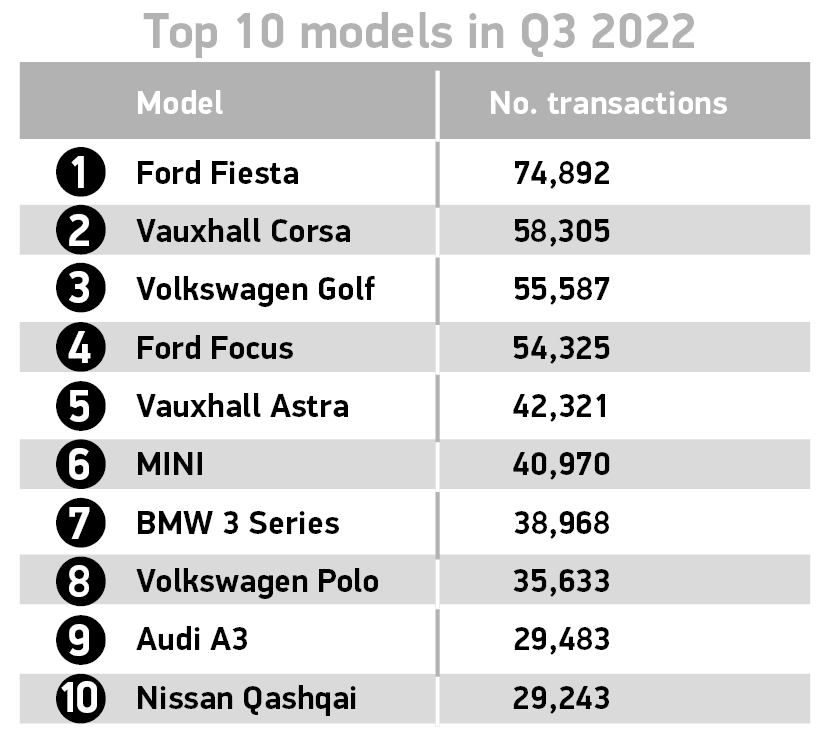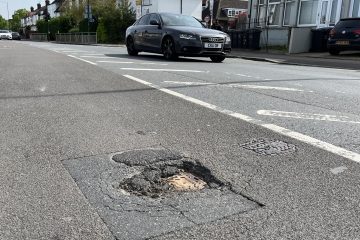The UK’s used-car market declined for the second quarter in succession, while the numbers for Q3 were also the worst for seven years.
According to the latest figures from the Society of Motor Manufacturers and Traders (SMMT), 1,785,447 vehicles changed hands, down 12.2% on the same period last year and the first time transactions between July and September have dipped below two million since 2015.
The new-car industry is suffering as supplies of critical components, such as semiconductors, run short. This is now starting to affect the used-car market, as supply of vehicles into the sector slows. This issue has been expected for some time, but evidence suggests the turning point is now. While the semiconductor shortage is expected to ease in 2023, used-car supplies will continue to be affected as the ripples continue down the chain.
In the year to date, sales are now down 9.7% to 5,319,482 transactions. The market is still outperforming new-car registrations, however, highlighting how important the aftermarket will be as these vehicles remain on roads, and require increased servicing through age.

Increase in used-electric vehicles
While the used-car market suffered, sales of used battery-electric vehicles (BEVs) bucked the trend, as activity rose 44.1% to 16,775 transactions. This means that 48,032 units have changed hands in the year so far.
The market for used hybrid electric vehicles (HEVs) also grew, up 2.5% in the quarter with 41,479 cars finding new owners, taking the yearly total so far to 119,722. Plug-in hybrid (PHEV) transactions, meanwhile, fell 5.8% to 13,899 in Q3, though they remain up 7.1% since January at 44,724 units.
Therefore, combined transactions for electrified vehicles reached 4% market share in Q3, up from 3.3% in the same period during 2021. However, used petrol and diesel vehicles continued to dominate the market, totalling 1,708,299 transactions in the last quarter. Petrol lead the way, with a 57.1% market share.
“Given the short supply of new cars due largely to sustained chip shortages, a declining used car market comes as little surprise, although it’s great to see a growing number of used buyers able to get into an electric car,” commented SMMT Chief executive Mike Hawes.
“The demand is clearly there and to feed it we need a buoyant new car market, which means giving buyers confidence to invest. Next week’s Autumn Statement is an opportunity for the government to make a long-term fiscal commitment to zero-emission motoring, including adequate public charging infrastructure, which, especially given the economic headwinds, would go a long way to stimulating the market and delivering both economic and net-zero progress.”
Ford Fiesta leads the way in used-car market
Sales declined across all vehicle segments; however superminis remained the most popular form of vehicle sold, with a 32.3% market share, with the lower-medium segment taking 26.4%.
The discontinued Ford Fiesta led the way in the table to top cars, with 74,892 transactions, clearly ahead of the Vauxhall Corsa (58,305). With the car disappearing from showrooms, there is clearly still demand for the model, and it will remain on roads for years to come. The latest figures do not cover the date of Ford’s announcement, so the Q4 numbers may see a further bounce in popularity.

Black continued to prove the most popular used car colour, accounting for 21.4% of the market, ahead of grey which moved into second place, up from fourth this time last year, while blue remained in third. Demand for silver vehicles fell by 18%, the most for any colour, as it slipped from second to the fourth best seller this quarter.
The South East region, excluding London, saw the most activity in Q3 with 265,755 used cars changing hands. In second was the North West, with 196,560 transactions, followed by the West Midlands in third at 178,824. Northern Ireland saw the least activity in the quarter, with 56,563 used cars sold, followed by the North East at 72,181.




You must be logged in to post a comment.